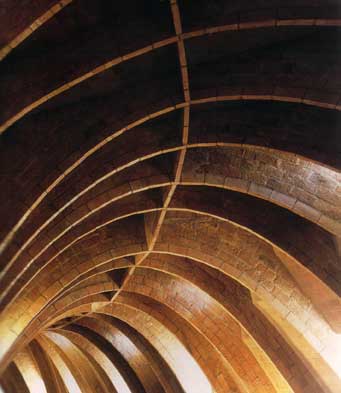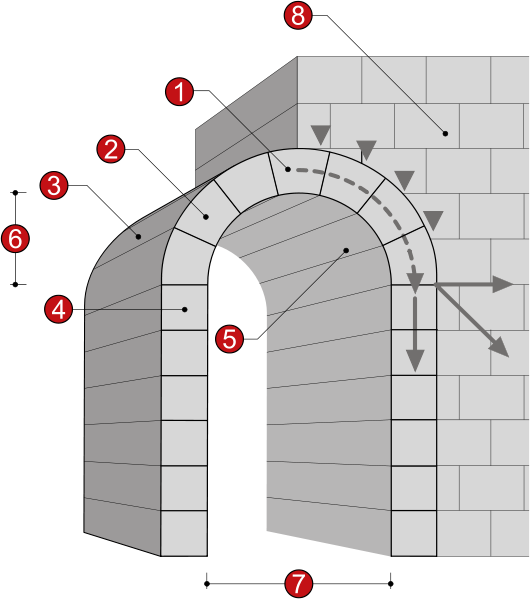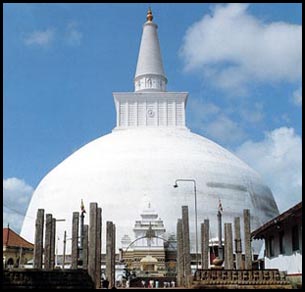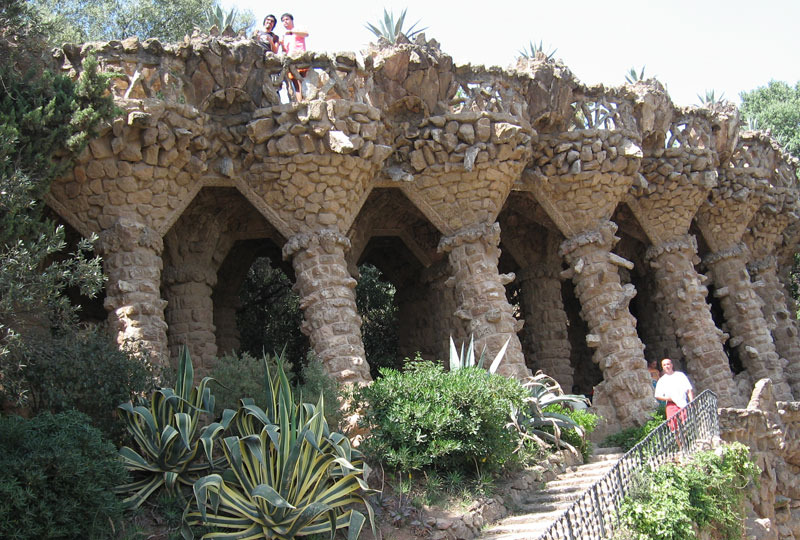Can a mason build a submarine? It sounds kind of silly.
I have made several references in this blog to high strength underwater spheres made of concrete. A great deal of research has actually been conducted on this topic, mostly by the U.S. Navy and also by oil companies involved in deepwater drilling.
Mr. Wellmer, of
http://www.boatdesign.net/, has collected much information on concrete submarines and has built several concrete submarines. He is an enthusiast of concrete submarines (personally I like Led Zeppelins).
As Mr. Wellmer states on his
website, “…you get a giant hull that is surprisingly pressure resistant, comfortable, and maintenance free, at moderate cost…a concrete hull will be fine with the same level of maintenance that have submarine tunnels, oil rigs, bridge foundations, to keep it barnacle free you have to scrap them off. What is different to a wood, or steel hull is that the material needs no attention at all. No sandblasting, painting, drydock. - once in water it can stay there for several decades. This is a major cost saver…”
And here he discusses the benefits of concrete versus steel:
“Of course you can drill concrete - easier than steel.
Reliable thru hulls - never had a problem ...
Never had a drama with a hatch.
Steel and concrete have very similar expansion rates this makes steelbars in concrete as a compound material possible.
I am not aware that submarine concrete projects like eurotunnel, Troll A, etc use concrete for lame ass money saving - very particular point of view.
Structural concrete engineering has 2000 years of tradition going back to ancient rome ...
The blimp shape is because it is the BEST shape and you can form concrete to ANY shape and thickness which is not the case in steel.
No rocking on anchor place - not my submarine yachts.
Concrete is the most quality controlled and controllable material in the engineering world.
Yes you trust concrete every time you enter a building with thousands of tons of pressure in the columns and changing wind loads all the time.
On of the BIG advantage of concrete is that it gives clear visible warning before weakening by rust brings up failure - any civil engineer can orient you on that.”
Then several papers, mostly by the Navy, are cited, which provide more insight into concrete submarines and concrete spheres. This first one describes how a concrete sphere for underwater use is better without any steel reinforcement:
-------------------------------------
Title : Behavior of Steel Bar Reinforced Concrete Spheres under Hydrostatic Loading.
Descriptive Note : Technical note Jun 71-Oct 73,
Corporate Author : CIVIL ENGINEERING LAB (NAVY) PORT HUENEME CALIF
Personal Author(s) : Albertsen,N. D.
Report Date : APR 1975
Pagination or Media Count : 27
Abstract : Four reinforced and two unreinforced concrete spheres of 32.00-inch outside diameter (OD) and 2.71-inch wall thickness (t) were tested under hydrostatic loading to determine the effect of embedded steel reinforcement on structural behavior. Test results show that the reinforced spheres (0.44 or 1.10% steel by area) failed by implosion at values for the ratio of implosion pressure to concrete strength that were on the average 5% lower than for the unreinforced spheres of the same size. In addition, the reinforced spheres developed cracks in-the-plane-of-the-wall at the inner surface of the reinforcement cage prior to implosion. Implosion results for the unreinforced spheres are 10% lower than predicted by an empirical equation developed from previous tests of unreinforced 16-inch OD spheres. These results provide initial insight into the behavior of hydrostatically loaded steel bar reinforced concrete spheres and indicate that additional test data is required before definitive design guides can be developed.
-----------------------------------------------------
Here’s a paper discussing at what water depth concrete spheres implode (this is from 1968, a little dated):
-----------------------------------------------------
BEHAVIOR OF SPHERICAL CONCRETE HULLS UNDER HYDROSTATIC LOADING-PART III.
Relationship Between thickness-To-Diameter Ratio and Critical Pressures, Strains, and Water permeation Rates, Technical Report R588, Naval Civil Engineering laboratory, Port Hueneme, CA, by J.D. Stachiw and K. Mack, June 1968, 36 pages.
Sixteen hollow concrete spheres of 16-inch outside diameter were subjected to external hydrostatic pressure to investigate the relationship between the sphere's shell thickness and (1) its critical pressure, (2) permeability, and (3) strain magnitude. The shell thickness of the spheres varied from 1 inch to 4 inches in 1-inch steps. All spheres were cast from the same concrete mix, cured under identical temperature and moisture conditions, and tested in the same manner. The strength of concrete in the spheres at the time of testing, as established by uniaxial compression tests on 3 x 6-inch cylinders, was in the 9,000-to-11,000-psi range. The critical pressure of waterproofed hollow concrete spheres was found to be approximately a linear function of the sphere's thickness; the spheres imploded at pressures from 3,240 to 13,900 psi, depending on their thickness. Concrete spheres permeated by seawater failed at hydrostatic pressures 30% to 15% lower than identical waterproofed spheres. In all cases the stress in the spheres at the time of implosion was considerably higher than in concrete test cylinders prepared of the same mix and of the same curing history subjected to uniaxial compression. The resistance of concrete to permeation by seawater into the interior of nonwater proofed spheres at 2,000-psi hydrostatic pressure was found to be an exponential function of shell thickness. The rate of flow into the sphere's interior ranged from 6.1 to 0.197 ml/day/ ft2 of exterior surface, depending on the thickness of shell.
-----------------------------------------------
Yet another paper on long term, deep depth testing of concrete spheres:
Title : Long-Term, Deep Ocean Test of Concrete Spherical Structures - Results after 13 Years.
Descriptive Note : Technical rept. Mar 78-Nov 84,
Corporate Author : NAVAL CIVIL ENGINEERING LAB PORT HUENEME CA
Personal Author(s) : Rail,R. D. ; Wendt,R. L.
Report Date : JUL 1985
Pagination or Media Count : 70
Abstract : In 1971, a long-term, deep-ocean test was started on 18 pressure-resistant, hollow concrete spheres, 66 inches in outside diameter by 4.12 inches in wall thickness. The spheres were placed in the ocean near the seafloor at depths from 1,840 to 5,075 feet. Over a 13 year period, annual inspections of the spheres using submersibles have provided data on time-dependent failure and permeability. After 5.3 years of exposure, three spheres were retrieved from the ocean for laboratory testing, and after 10.5 years two more spheres were retrieved and tested. This report is the third report in a series describing and summarizing the findings from the ocean and laboratory tests. Data on concrete compressive strength gain, short-term implosion strength of the retrieved spheres, and permeability and durability of the concrete were obtained. The data have shown that concrete exhibits good behavior for ocean applications. High quality, well-cured concrete can be expected to gain and maintain strength when submerged in seawater under high pressure. Concrete is a durable material in the deep ocean; neither deterioration of the concrete matrix nor corrosion of reinforcing steel are problems, even though the concrete becomes saturated with seawater. Uncoated concrete has a very low rate of premeation of seawater through the concrete and even this small flow can be prevented by a waterproofing coating. (Author)
Descriptors : *CONCRETE, *STRENGTH(MECHANICS), *UNDERWATER STRUCTURES, *DEEP OCEANS, THICKNESS, PERMEABILITY, LABORATORY TESTS, CORROSION, TIME DEPENDENCE, FAILURE, HIGH PRESSURE, SPHERES, DEPTH, STEEL, SHORT RANGE(TIME), COATINGS, STRENGTH(GENERAL), GAIN, INSPECTION, WALLS, FLOW, OCEANS, DETERIORATION, SEA WATER, LOW RATE, OCEAN BOTTOM, REINFORCING MATERIALS, COMPRESSIVE PROPERTIES, WATERPROOFING, SUBMERSIBLES, IMPLOSIONS.
Subject Categories : PHYSICAL AND DYNAMIC OCEANOGRAPHY
CERAMICS, REFRACTORIES AND GLASS
Distribution Statement : APPROVED FOR PUBLIC RELEASE
Finally, three more Navy papers discussing concrete spheres at depth:
Corporate Author : CIVIL ENGINEERING LAB (NAVY) PORT HUENEME CA
Personal Author(s) : Haynes,Harvey H. ; Highberg ,Roy S.
Report Date : JAN 1979
Pagination or Media Count : 53
Abstract : In 1971, a long-term, deep-ocean test was started on eighteen concrete spheres, 66 inches (1, 676 mm) in outside diameter by 4,12 inches (105 mm) in wall thickness. The spheres were placed in the ocean at depths from 1,840 to 5,075 feet (560 to 1,547 m). Over a 6.4-year period, yearly inspections of the spheres by submersibles have provided data on time-depedent failure and permeability. After 5.3 years, three of the spheres were retrieved from the ocean for laboratory testing. Data on concrete compressive strength gain, short-term implosion strength of the three retrieved spheres, and permeability and durability of the concrete were obtained. This report summarizes the findings from the laboratory and ocean tests. (Author)
Descriptors : *CONCRETE, *UNDERWATER STRUCTURES, PERMEABILITY, PERFORMANCE(ENGINEERING), LOADS(FORCES), SHELLS(STRUCTURAL FORMS), SPHERES, STRENGTH(MECHANICS), LONG RANGE(TIME), SATURATION, PROTECTIVE COATINGS, WALLS, MARINE ENGINEERING, DEEP OCEANS, COMPRESSIVE PROPERTIES, WATERPROOFING, STRUCTURAL ENGINEERING, SEA TESTING, HYDROSTATIC PRESSURE, IMPLOSIONS.
-----------------
Descriptive Note : Technical rept. Jun 68-Jul 71,
Corporate Author : NAVAL CIVIL ENGINEERING LAB PORT HUENEME CALIF
Personal Author(s) : Haynes,H. H. ; Kahn,L. F.
Report Date : SEP 1972
Pagination or Media Count : 93
Abstract : Fourteen unreinforced concrete and mortar spheres, 66 inches in outside diameter (OD) and 4.125 inches in wall thickness, were subjected to simulated deep-ocean loading conditions. The average short-term implosion pressure for wet-concrete spheres was 2,350 psi and for the dry-concrete spheres was 2,810 psi; the average uniaxial compressive strength of the concrete was respectively 7,810 psi and 9,190 psi. Under long-term loading, the concrete spheres failed by static fatigue where the relation between level of sustained pressure and time to implosion was similar to that known for concrete under uniaxial loading. Wet-concrete spehres under seawater pressure as high as 1.670 psi showed an average D'Arcy's permeability coefficient, K sub c, of 10 to the minus 12 power ft/sec; this K sub c value was also similar to that known for concrete under freqhwater pressure as high as 400 psi. Design guides were developed to predict the short- and long-term implosion pressures and permeability rates of concrete spheres. (Author)
Descriptors : (*UNDERWATER VEHICLES, HYDROSTATICS), (*SHELLS(STRUCTURAL FORMS), *CONCRETE), (*SPHERES, CONCRETE), COMPRESSIVE PROPERTIES, PRESSURIZATION, LOADS(FORCES), DEFORMATION, STRAIN(MECHANICS), RUPTURE, DEEP WATER
Subject Categories : MARINE ENGINEERING
MECHANICS
-------------------------------
A Decade of Ocean Testing of Pressure-Resistant Concrete Structures
Rail, R.
Naval Civil Engineering Laboratory, Port Hueneme, CA, USA;
This paper appears in: OCEANS
Publication Date: Aug 1983
Volume: 15, On page(s): 593- 597
Current Version Published: 2003-01-06
Abstract
By means of long-term deep-ocean exposure and laboratory testing, experimental data have been obtained on compressive strength behavior, permeability, and durability of pressure-resistant concrete structural models (concrete spheres 66-inch O.D. by 4-1/8-inch wall thickness) subjected to continuously sustained hydrostatic pressure loading. After 10-1/2 years of ocean exposure at water depths of 1,840 to 5,075 feet, the major findings include: (a) The implosion (failure) strength and stiffness of the concrete spheres and the uniaxial compressive strength of concrete specimens increased during the first 5-1/2 years exposure in the ocean and remained essentially constant during the next 5 years; (b) There has been no evidence of seawater permeating through the walls into the interior of ocean-exposed spheres externally coated with a waterproofing material; uncoated (bare concrete) spheres have a very low rate of water ingress, i.e., a permeability coefficient of about10^{-14}ft/ sec; and (c) Visual inspection and microstructure examination of retrieved specimens have not revealed any significant deterioration of the concrete matrix; no corrosion was visible on steel reinforcing bars which had as little as one inch clear cover. This program has been a decade-long demonstration of the effective use of concrete in the ocean; it has been shown that concrete is a durable, reliable material for pressure-resistant structures for long-term deep-ocean applications.
-----------------------------------------------
Can a mason build a submarine? Does it still sound so crazy?
Next time we'll look at concrete canoes, and no: I'm not joking.









































